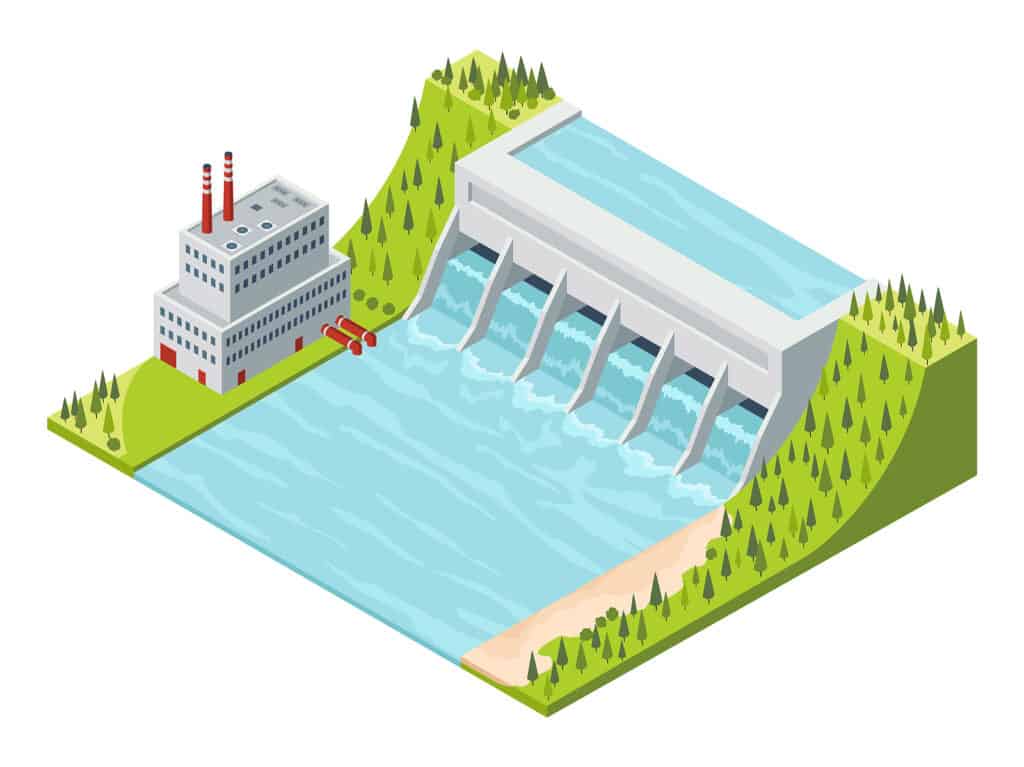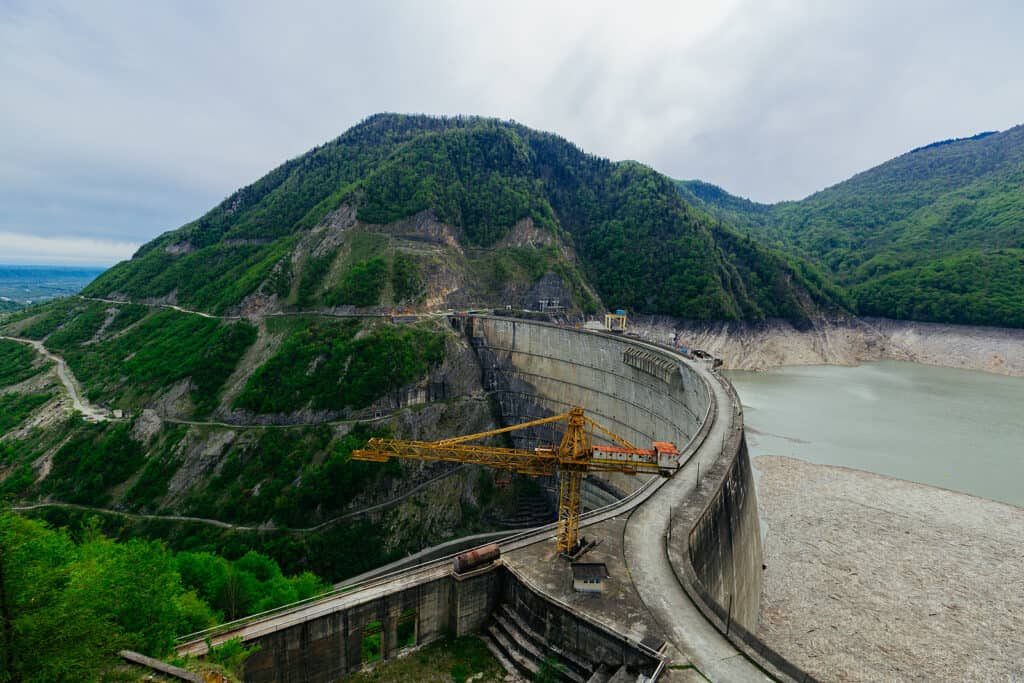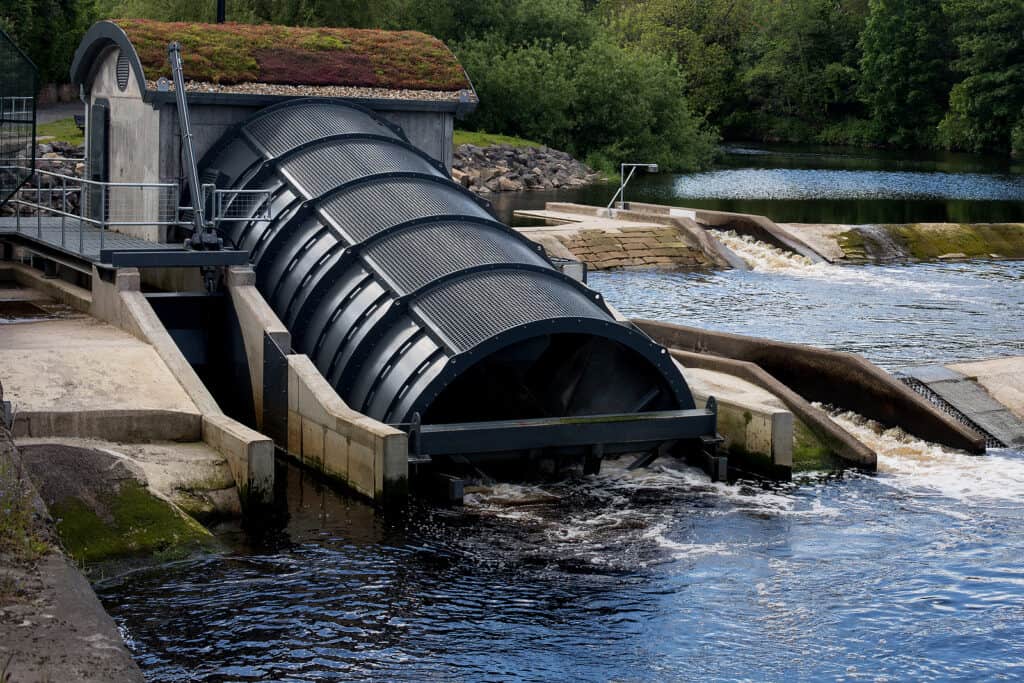Sustainable Solutions with Hydro Power
As a homeowner looking to save costs and reduce my carbon footprint, I find myself drawn to the promising realm of sustainable energy solutions. The world is shifting towards a cleaner future, and I believe that harnessing the power of flowing rivers and cascading waterfalls through hydropower could be the answer I've been searching for.
By embracing hydropower as a renewable energy source, I can make a significant impact on my monthly expenses. Unlike traditional energy sources, hydroelectric systems offer a cost-effective alternative once the initial investment is made. Once the infrastructure is in place, the ongoing operational costs remain relatively low, allowing me to enjoy long-term savings on my electricity bills.
What is Hydropower?
Before we dive into the sustainable solutions offered by hydropower, it's important to understand what it entails. Hydropower, or hydroelectric power, is a form of renewable energy that leverages the force or energy of moving water to generate electricity. The water's kinetic energy is captured and converted into mechanical energy by a turbine, which then drives a generator to produce electricity.

How Does Hydropower Work
Hydropower, as the name suggests, is a form of energy that harnesses the power of moving water to generate electricity. This type of renewable energy has been utilized for centuries, with modern hydropower plants being a sophisticated evolution of ancient waterwheel systems. The basic concept, however, remains largely the same.
Below is a step-by-step explanation of how hydropower works:
Step 1: Water Collection
The generation of hydropower begins with the collection of water. This typically involves constructing a dam across a river, resulting in the formation of a reservoir or a large artificial lake on the upstream side. The dam serves a dual purpose. On one hand, it enables engineers to control the flow of water, ensuring a steady supply for the power generation process. On the other hand, the dam increases the water level, creating a significant height difference between the water surface and the turbines located below. This height, or ‘head,' endows the water with potential energy, the main driver behind hydroelectric power.
Step 2: Water Channeling
With the water collected and potential energy stored, the next step is to guide this water towards the turbine. To achieve this, the water is funneled through a large pipe known as a penstock. The gravitational force acts on the water, driving it down the penstock with considerable pressure, all set to strike the turbine blades.
Step 3: Turbine Rotation
As the high-pressure water rushes down the penstock, it impinges on the blades of a turbine, causing them to rotate. Turbines in a hydropower plant are colossal mechanical devices, precision-engineered to convert the kinetic energy of the moving water into mechanical energy. This conversion is the heart of the hydropower generation process.
Step 4: Generator Activation
The turbine is directly connected to a generator via a shaft. Thus, when the turbine blades spin, they also turn the generator. Inside the generator, you'll find a series of copper coils (the armature) surrounded by a magnetic field. As the armature rotates within this field, it disturbs the magnetic field lines, leading to a flow of electrons – or what we commonly refer to as electricity.
Step 5: Electricity Transmission
Following the generation of electricity, the next step is to deliver this power to where it's needed. The electricity is dispatched via an extensive network of power lines to homes, businesses, and industrial setups. However, before this transmission, power transformers are used to step up the voltage. This is because higher voltages allow for efficient transmission over long distances, reducing energy loss.
Step 6: Water Return
Once the water has served its purpose of driving the turbines, it's not discarded. Instead, it's released back into the river downstream. This return of water maintains the ecological balance by not interrupting the natural water cycle. It also minimizes the impact of the hydropower plant on the surrounding environment.

Is Hydropower Sustainable?
The sustainability of hydropower is a complex issue. On the one hand, it provides a significant amount of renewable energy and has several positive attributes. On the other hand, it can also lead to various environmental and social issues. Let's examine both aspects.
Why Hydropower is Sustainable?
- Renewable Source of Energy: Hydropower is considered renewable because it uses the Earth's water cycle to generate electricity, which is a natural and endless process. As long as the sun continues to evaporate water, rivers will flow, and hydropower can be produced.
- Low Emissions: Once a hydropower plant is operational, it emits almost no greenhouse gases. This makes hydropower a clean energy source that can significantly help reduce global carbon emissions and mitigate the effects of climate change.
- Reliable and Consistent: Hydropower is a reliable source of power. Unlike solar and wind energy, which depend on weather conditions, hydropower can provide a steady and consistent output. It also has the advantage of being able to quickly adjust to electricity demand, making it an excellent option for balancing the grid.
Why is Hydropower not Sustainable?
- Environmental Impact: The construction of dams for hydropower significantly alters the environment. It can change water temperatures, chemistry, flow characteristics, and silt loads, all of which can disrupt ecosystems and lead to the loss of biodiversity. Fish, in particular, can be affected as dams hinder their migratory patterns.
- Social Impact: Dam construction often involves displacing people who live where the reservoirs are planned. In many cases, local communities are forced to relocate, resulting in social tension and possible loss of livelihoods.
- Emission of Greenhouse Gases: While operational emissions are low, hydropower reservoirs, particularly in tropical regions, can emit significant quantities of methane – a potent greenhouse gas. This happens when organic matter in the flooded areas decomposes under low-oxygen conditions.
- Finite Lifespan and High Initial Costs: Hydroelectric facilities are expensive to build and have a finite lifespan. Over time, sediment buildup can reduce the lifespan of a reservoir, leading to high maintenance or decommissioning costs.
The Many Advantages Of Hydropower: Embracing a Sustainable Future
Harnessing the power of flowing water, hydropower offers numerous environmental, social, and economic benefits. Here's an in-depth look at the remarkable advantages this sustainable energy solution provides.
Renewable and Sustainable
As long as we have rivers and rainfall, hydropower will be a sustainable source of energy. Unlike fossil fuels, which deplete over time and cause pollution, hydropower uses the endless cycle of evaporation and precipitation, providing a continuously renewing source of energy.
Clean and Green
Hydropower doesn't emit pollutants or greenhouse gases during operation, making it an incredibly clean source of energy. This characteristic is particularly valuable as the world battles the negative effects of climate change, striving to lower carbon emissions.
Reliable and Efficient
Hydropower plants are highly efficient, often converting more than 90% of available energy into electricity, which is far greater than fossil fuel power plants. Additionally, they offer a reliable source of energy, with the ability to ramp up to full power quickly, ensuring a stable electricity supply even during peak demand.
Economically Beneficial
Hydropower projects often bring about a significant boost to local economies. They can create jobs, both during the construction phase and for ongoing operations. These economic benefits can ripple through local economies, supporting ancillary businesses and services.
Supports Grid Stability
Hydropower is highly flexible, enabling it to meet sudden changes in electricity demand. It's also excellent for providing base load and peak load supply. This capability makes it an essential component in maintaining the stability of the power grid.
Offers Energy Storage
Pumped storage hydropower plants offer a large-scale energy storage solution. These plants pump water uphill during periods of low electricity demand and release it to generate power when demand is high. This feature makes them ideal for balancing intermittent energy sources like solar and wind power.
Encourages Rural Development
Small-scale hydropower projects can be a game-changer for rural communities with limited access to the main power grid. These projects can provide local, renewable electricity, fostering self-sufficiency and development in these areas.
Multipurpose
Beyond electricity generation, many hydropower facilities are designed for multiple uses. Reservoirs created for hydropower can also be used for irrigation, fishing, navigation, and recreational activities like boating and swimming.
Long Life-span
Hydropower plants have an incredibly long life-span. With proper maintenance and upgrades, these facilities can remain operational and productive for many decades, even up to a century, making them a long-term investment in clean energy and economic development.

The Global Sustainable Water and Energy Solutions Network
Despite significant progress in renewable energy technologies, the global energy landscape continues to heavily rely on fossil fuels as the dominant energy source. While there have been commendable strides in the adoption of renewable energy, such as solar and wind power, fossil fuels still hold a substantial portion of the global energy supply. This overdependence on fossil fuels presents multiple challenges, both from a sustainability perspective and in terms of exacerbating the impacts of climate change figure.
The sustainability issue arises due to the finite nature of fossil fuel reserves. As these resources are depleted, their extraction becomes more challenging and costly, leading to potential energy security concerns. Additionally, the burning of fossil fuels releases large amounts of carbon dioxide and other greenhouse gases into the atmosphere, contributing to global warming and climate change. The resulting environmental impacts, including rising sea levels, extreme weather events, and ecosystem disruptions, further highlight the urgent need for a transition to sustainable energy sources.
The Promising Potential of Hydropower
Hydropower is the world's leading source of renewable energy, offering immense potential for expansion and diversification. It provides a clean, reliable, and cost-effective electricity supply, contributes to climate change mitigation, and can boost local economies.
Clean Energy Source
As a renewable energy source, hydropower is fundamentally sustainable. Unlike burning fossil fuels, generating electricity with hydropower doesn't release harmful greenhouse gases. This can significantly cut our carbon footprint and help us mitigate the worst impacts of climate change.
Reliable and Cost-effective
Hydropower plants are long-lived assets that can deliver electricity for several decades. Once a plant is built, the water source is essentially free, making hydropower a cost-effective solution. Furthermore, the technology is mature and reliable, providing a steady stream of electricity unlike intermittent sources like wind or solar power.
Economic and Social Benefits
Hydropower projects can bring significant social and economic benefits, particularly in developing countries. They can create jobs, boost local economies, provide opportunities for rural electrification, and contribute to improving living standards.
Sustainable Solutions: How Hydropower Can Shape Our Future
Hydropower's potential is enormous, and several strategies can maximize its sustainable development. Let's explore a few.
Technological Advancements
There have been substantial advances in hydropower technology, which can further enhance its sustainability. For instance, turbine design improvements can reduce the environmental impact and increase the power generation efficiency. Smart-grid technologies can also integrate hydropower seamlessly with other renewable sources, enhancing energy security.
Small-scale Hydropower
Small-scale or “micro” hydropower systems are a promising sustainable solution, particularly in remote areas. These systems can provide a reliable, local source of electricity without the need for extensive power distribution networks, fostering community resilience and energy independence.
Environmental and Social Impact Assessment
While hydropower is inherently clean, it's not without its environmental and social impacts. Large dams can disrupt local ecosystems and displace communities. Therefore, comprehensive environmental and social impact assessments should be conducted before any project, aiming for a balance between hydropower development and ecosystem conservation.
Policy Support
Policies and regulations can play a significant role in promoting hydropower. Government incentives, supportive regulations, and international cooperation can accelerate the transition towards a sustainable energy future.
Frequently Asked Questions (FAQs) aboutHydropower:
1. Is hydropower a renewable energy source?
Yes, hydropower is considered a renewable energy source because it utilizes the continuous cycle of water to generate electricity. As long as there is water available, hydropower can be produced.
2. How does hydropower compare to other renewable energy sources like solar and wind?
Hydropower has the advantage of being a reliable and consistent source of energy, unlike solar and wind power, which are dependent on weather conditions. Hydropower can provide a steady output and can quickly respond to changes in electricity demand.
3. Are there different types of hydropower systems?
Yes, there are different types of hydropower systems. They can range from large-scale hydroelectric dams that generate significant amounts of electricity to small-scale or micro-hydropower systems that provide power to local communities or individual households.
4. What are the environmental impacts of hydropower?
The construction of dams for hydropower can have significant environmental impacts. It can disrupt natural river flow, alter water chemistry, affect fish migration, and lead to the loss of habitats and biodiversity. Reservoirs can also emit greenhouse gases, such as methane, due to the decomposition of organic matter in flooded areas.
5. Does hydropower contribute to climate change mitigation?
Yes, hydropower contributes to climate change mitigation as it produces electricity without emitting significant amounts of greenhouse gases. By displacing fossil fuel-based energy sources, hydropower helps reduce carbon emissions and mitigate the impacts of climate change.
6. Can hydropower projects have social implications?
Yes, hydropower projects can have social implications, particularly when they involve the construction of large dams. Communities living in the areas where reservoirs are planned may be displaced, leading to social tension and potential loss of livelihoods. It is crucial to address these social impacts and involve local communities in the decision-making process.
7. Is hydro power sustainable in the long run?
The sustainability of hydropower depends on various factors, including the management of its environmental and social impacts. While it offers renewable energy and low emissions, the construction and operation of hydropower projects can have significant environmental and social consequences. Striking a balance between these impacts and the benefits of clean energy is essential for long-term sustainability.
8. Can small-scale hydropower systems be beneficial?
Yes, small-scale or micro-hydropower systems can be beneficial, especially in remote areas where access to electricity is limited. These systems can provide a reliable and local source of energy, promoting energy independence and community resilience.
9. Are there any alternatives to large dams for hydropower generation?
In addition to large dams, there are alternative approaches to hydropower generation. These include run-of-river systems that divert a portion of the river's flow without creating large reservoirs, and pumped-storage hydropower, which uses excess electricity during low-demand periods to pump water uphill for later release and generation during peak demand.
10. How can the environmental and social impacts of hydropower be mitigated?
Comprehensive environmental and social impact assessments, as well as stakeholder engagement, are essential in mitigating the impacts of hydropower projects. Consideration should be given to minimizing ecosystem disruption, promoting fish passage solutions, and ensuring the involvement and benefits of local communities.
Conclusion
As I conclude my exploration of sustainable solutions with hydropower, I am filled with a renewed sense of optimism and conviction. The potential of harnessing the power of flowing rivers and cascading waterfalls for clean and renewable energy is awe-inspiring. It aligns perfectly with my personal goals of saving costs and reducing my carbon footprint as a homeowner.
Hydropower offers me a unique opportunity to make a tangible impact on my monthly expenses while contributing to a cleaner and greener future. The cost savings associated with hydropower, once the initial investment is made, will provide long-term benefits for my household. By reducing reliance on traditional energy sources and embracing a renewable alternative, I can significantly reduce my electricity bills and enjoy sustainable cost savings.
Sources
- https://ec.europa.eu/research-and-innovation/en/projects/success-stories/all/making-sustainable-hydropower-reality
- https://www.pnas.org/doi/10.1073/pnas.1809426115
- https://www.sciencedirect.com/science/article/pii/S1470160X21004131
- https://www.mdpi.com/journal/sustainability/special_issues/hydropower_sustainability

